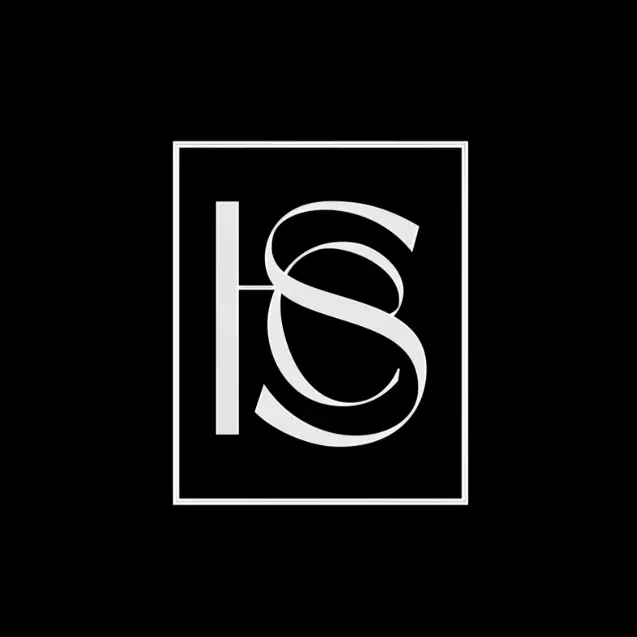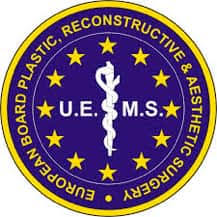Rhinoplasty (Nose Job) in Turkey

Note: Hello Skin Clinic acts in a concierge capacity. We arrange your surgery with our partner medical facility and arrange your trip to Turkey.
What is Rhinoplasty
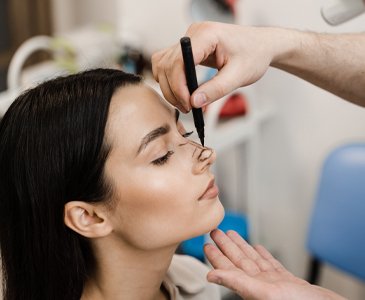
Rhinoplasty, often referred to as a nose job, is a highly sophisticated surgical procedure designed to enhance the proportion, symmetry, and function of the nose. Whether you wish to refine the shape, adjust the size, correct asymmetry, or address breathing difficulties, rhinoplasty can provide a transformative yet natural-looking result that harmonises beautifully with your facial features.
The procedure itself is performed using either closed rhinoplasty, where incisions are discreetly placed inside the nostrils, or open rhinoplasty, where a small incision is made across the columella for greater precision in reshaping the nasal structure. Expert plastic surgeons in our partner hospital in Turkey meticulously sculpt the bone and cartilage to achieve a refined and balanced aesthetic, ensuring results that appear both elegant and natural.
Meet Your Surgeon: Dr. Burak Pasinlioğlu

Hello Skin Clinic is proud to work with esteemed plastic surgeon Dr. Burak Pasinlioğlu to deliver Rhinoplasty surgery in Turkey. Dr Burak combines technical precision, artistic vision, and a patient-centred approach to deliver exceptional, natural-looking results. His expertise makes him a trusted choice for rhinoplasty in Turkey.
- Certified by EBOPRAS, the European Board of Plastic Reconstructive and Aesthetic Surgery
- Graduated from Ankara University Faculty of Medicine in 2013,
- Ranked 39th in Turkey in the highly competitive Medical Specialty Examination (TUS) in 2014.
- Specialised in plastic, reconstructive, and aesthetic surgery at Gazi University Faculty of Medicine, one of Turkey’s most prestigious clinics.
- Advanced international training, including experience at Cleveland Clinic and breast aesthetics specialisation under Prof. Dr. Moustapha Hamdi in Brussels.
- Works with JSI accredited hospitals in Turkey (JSI is a non-profit organisation focused on patient safety)
Dr Pasinlioğlu's certifications
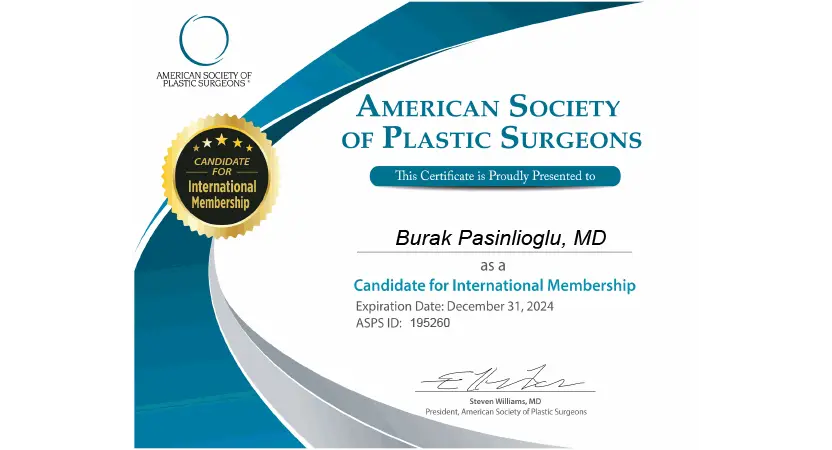
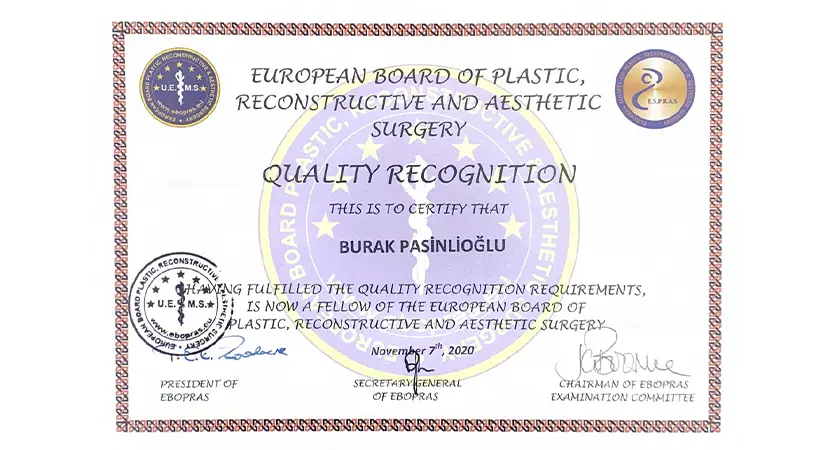
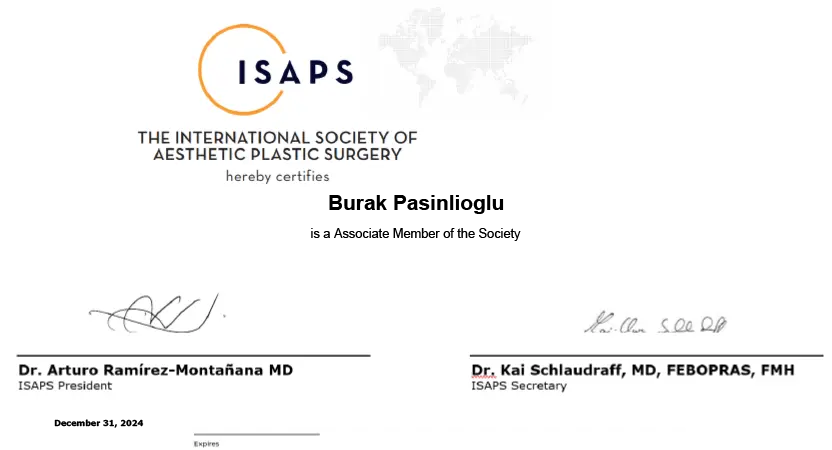





Rhinoplasty Before and Afters
The following pictures show before and afters of some of Dr. Pasinlioğlu’s Rhinoplasty patients.
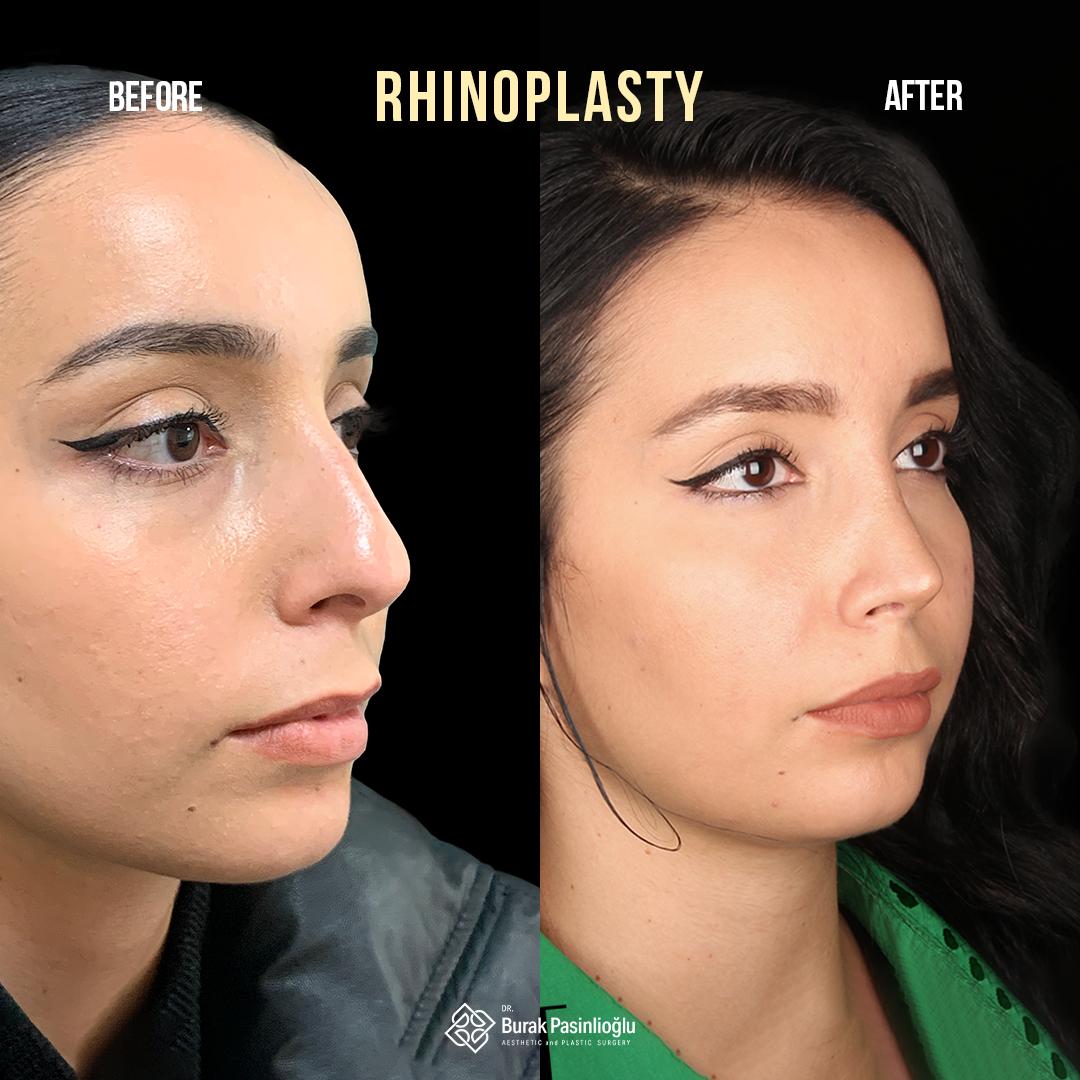

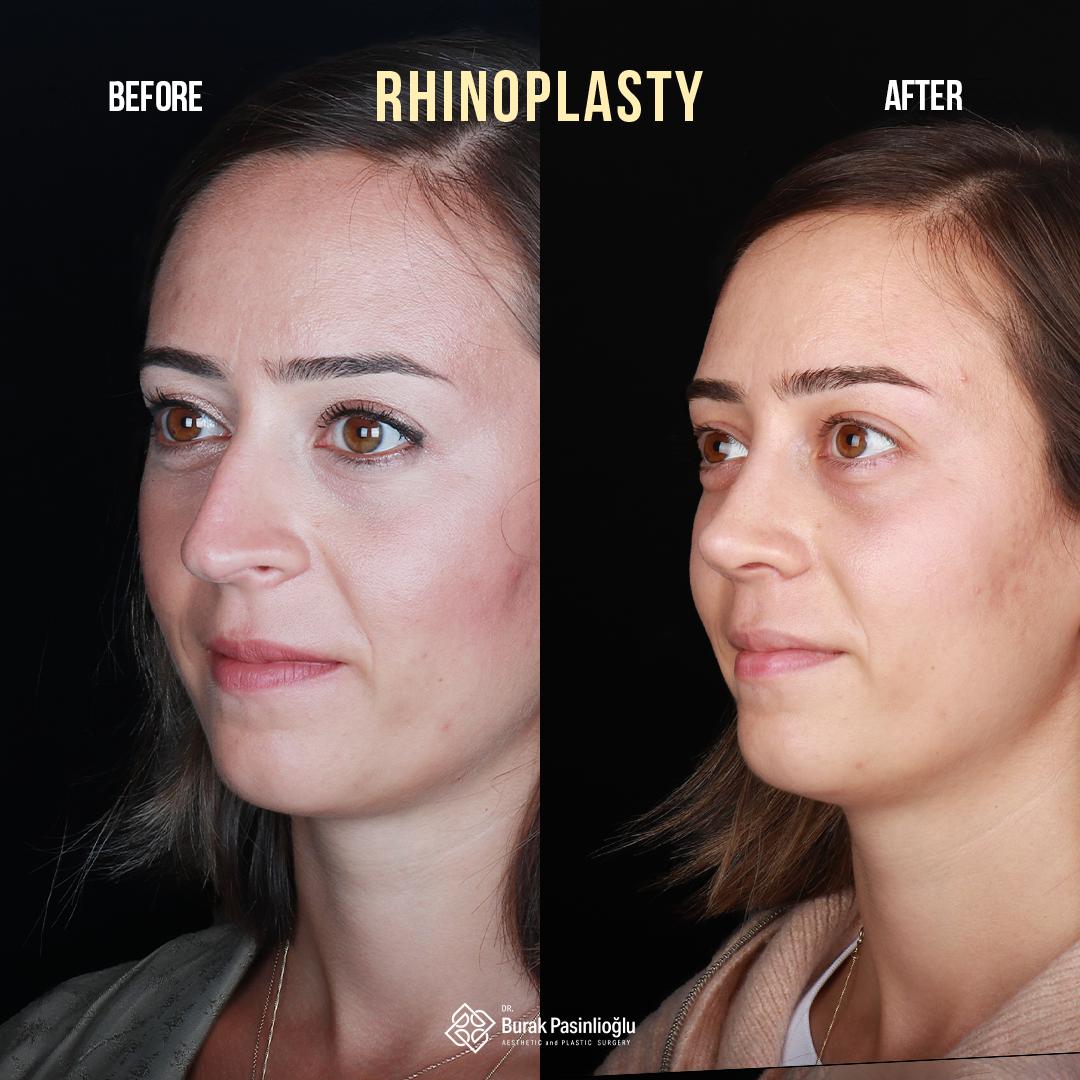

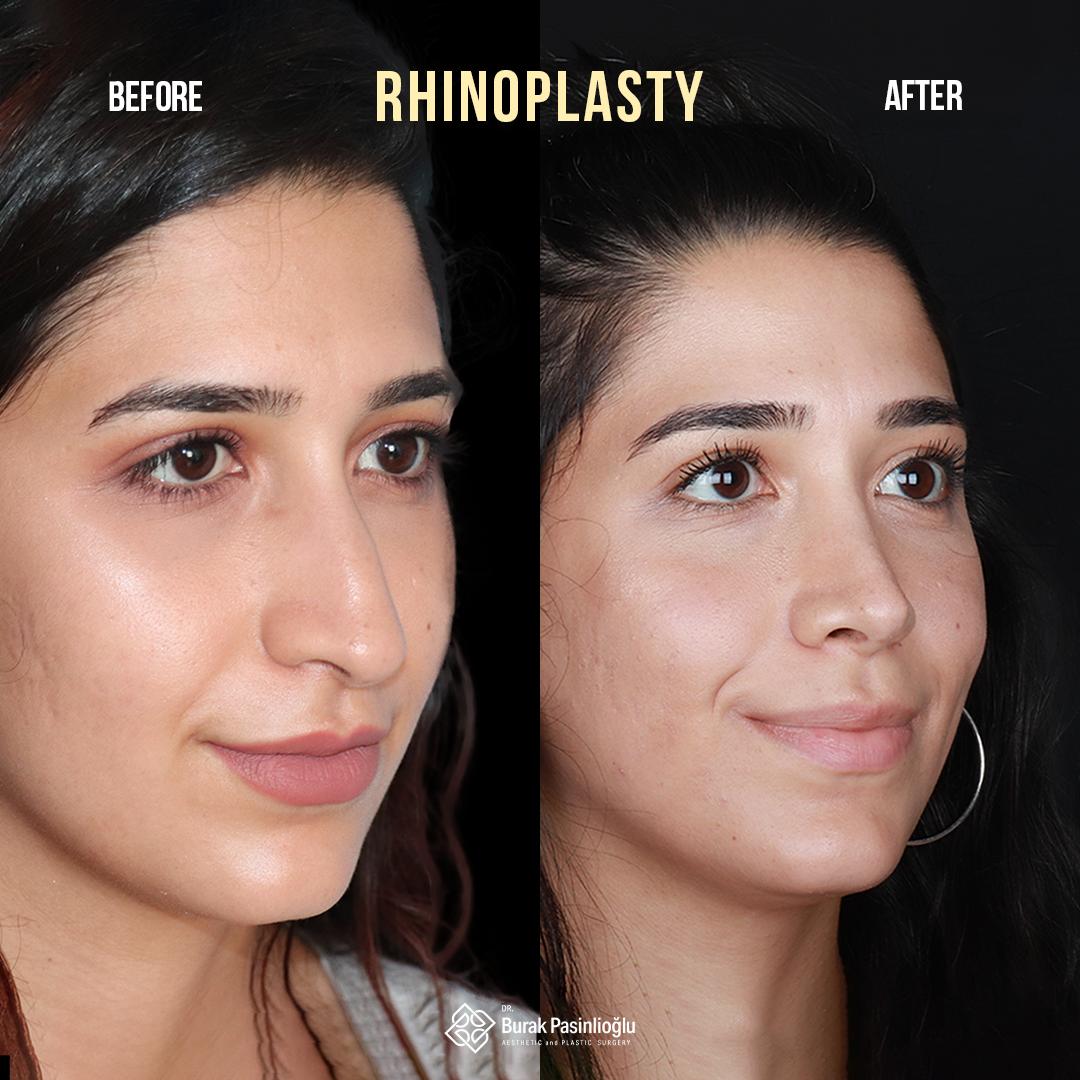

4X Medical Insurance
Your safety and convenience is our priority. That’s why we offer comprehensive 4X medical travel insurance, designed to protect you from unexpected events before, during, and after your treatment journey. Travel with peace of mind — get in touch to learn more.
Travel Insurance
Covers accidents, injuries, lost luggage, theft, and other travel-related risks during your trip.
Country-Related Insurance
Covers safe return home in case of political, military, or international crises during your stay in Turkey.
Surgery Insurance
Covers extended post-surgery recovery, complications insurance, and 180 days of aftercare support back in your country.
Unexpected Conditions Insurance
Covers emergencies such as adverse weather, sudden epidemics like Covid-19, and unexpected travel restrictions.
Benefits of Rhinoplasty

Undergoing a rhinoplasty can offer a range of benefits, including:
Enhanced facial harmony – A well-proportioned nose can bring balance to your facial features, ensuring a more aesthetically pleasing profile. By, for example, refining a dorsal hump, adjusting the nasal tip or narrowing the bridge a nose job can create a subtle yet transformative improvement that enhances overall facial symmetry.
Improved confidence – A nose that aligns with your aesthetic goals can dramatically boost your self-esteem and self-image. Many patients find that after rhinoplasty, they feel more comfortable in social settings, on camera, and in their daily interactions, allowing their confidence to shine.
Corrected asymmetry – If a previous injury has left you with a crooked, uneven, or misshapen nose, rhinoplasty can help restore balance and symmetry. Correcting nasal asymmetry can significantly improve both aesthetics and functionality.
Better breathing – Beyond cosmetic enhancements, rhinoplasty can also have functional benefits, particularly for those with a deviated septum, nasal obstructions, or breathing difficulties. By reshaping the nasal structure, the procedure can enhance airflow, making breathing easier and improving overall respiratory health, particularly during exercise and sleep.
Long-lasting results – Unlike non-surgical treatments that require ongoing maintenance, a nose job offers a permanent enhancement. With the expertise of a skilled surgeon and proper aftercare, your results can last a lifetime, allowing you to enjoy the benefits of a beautifully sculpted nose for years to come.
Your Rhinoplasty Process Explained
At Hello Skin Clinic, we take care of every detail to ensure your rhinoplasty in Turkey is a stress-free, luxurious experience. From your initial chat to your post-surgical care, we provide an end-to-end service tailored to your needs.

Personalised Treatment Plan
Your journey begins with a one-on-one discussion at our Birmingham clinic, where we discuss your aesthetic goals and develop a customised plan in coordination with our partner surgeons in Turkey. We handle all the logistics, including surgery scheduling, luxury accommodation, private transfers, and post-operative care.
VIP Airport Transfers & Hotel Stay
Upon arrival in Turkey, you’ll be greeted by a private driver who will escort you to your premium accommodation. Throughout your stay, we arrange all necessary transfers, ensuring seamless travel between your hotel and the hospital for consultations, surgery, and follow-up appointments.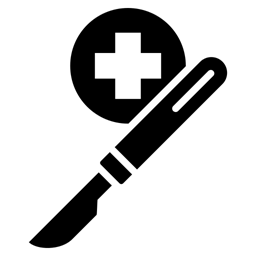
Expert Surgery & Hospital Care
Your rhinoplasty procedure will be performed by one of Turkey’s leading plastic surgeons, using advanced techniques to achieve the most natural, refined results. You’ll receive exceptional care in a state-of-the-art, JSI-accredited medical facility, with dedicated staff ensuring your comfort and safety throughout.
Personalised Aftercare & Recovery
Following your surgery, we prioritise your healing and well-being. A dedicated nurse will visit you daily at your hotel to monitor your recovery and make sure you’re comfortable. Additionally, your surgeon will check in as needed and provide any additional care if needed.
A Smooth Return Home
Once your recovery phase in Turkey is complete, we fully prepare you to return home with detailed aftercare instructions and ongoing support from our team. Your journey with Hello Skin Clinic doesn’t end when you leave Turkey — we remain available for any questions or follow-ups you might have.Why Choose Turkey For Your Rhinoplasty?
Turkey has become a world-renowned destination for plastic surgery, particularly rhinoplasty, attracting patients from across the globe. Here’s why:
Highly skilled surgeons – Turkey is home to incredibly experienced and sought-after plastic surgeons, specialising in advanced rhinoplasty techniques.
State-of-the-art clinics – Many hospitals and medical centres are equipped with cutting-edge technology, ensuring the best surgical outcomes. We only partner with JSI accredited medical facilities.
Exceptional affordability – Compared to the UK and other Western countries, Turkey offers top-tier cosmetic surgery procedures at a fraction of the cost, without compromising on quality or safety.
Luxury, all-inclusive experience – Our clients enjoy an all-inclusive package, including travel, luxury accommodation, private hospital stay, and VIP concierge and after care services, making their journey both comfortable and stress-free.
Procedure, recovery, risks and aftercare
What Happens During Rhinoplasty?
Rhinoplasty is a surgical procedure designed to reshape, refine, or reconstruct the nose for aesthetic or functional improvements. Depending on the technique used, the surgeon makes precise incisions either inside the nostrils (closed rhinoplasty) or along the columella (open rhinoplasty) to access and sculpt the underlying bone and cartilage. The nose is then carefully reshaped to achieve the desired look, ensuring balance and harmony with your facial features. Once complete, the incisions are closed, and a splint is applied to support the new structure during healing. Rhinoplasty surgery is performed under general anaesthesia and usually takes between one and three hours.
What Does Recovery Look Like?
After surgery, you can expect swelling, bruising, and mild discomfort, particularly around the nose and eyes. The nasal splint will typically remain in place for 7–10 days, and most patients feel comfortable returning to light activities within 10–14 days. While the initial swelling subsides within a few weeks, it can take several months for the nose to fully settle into its final shape, with subtle refinements continuing for up to a year.
Required Aftercare
Following your rhinoplasty, proper aftercare is essential for a smooth recovery and optimal results. You will need to keep your head elevated, avoid strenuous activities, and protect your nose from any impact. Your surgeon will provide detailed post-operative instructions, including how to clean your nose, manage swelling, and when to resume normal activities. Regular follow-up appointments, either in person or virtually, will ensure your healing is on track.
Risks and Side Effects
As with any surgical procedure, rhinoplasty carries some risks and potential side effects. Temporary swelling, bruising, and nasal congestion are common, while rarer complications can include infection, breathing difficulties, or asymmetry. Choosing an experienced, board-certified surgeon significantly reduces these risks and ensures a safe procedure with beautiful, natural-looking results. Your surgeon will discuss all potential risks with you during your consultation, helping you make an informed decision.
Frequently Asked Questions About Rhinoplasty
Am I a good candidate for rhinoplasty?
Rhinoplasty is ideal for individuals looking to improve the shape, size, or function of their nose. Good candidates are generally in good health, have realistic expectations, and seek to enhance their facial harmony or correct breathing difficulties. We can talk about your health, your goals and expecrations to determine if rhinoplasty is right for you.
How long does it take to recover from a nose job?
Most patients can return to light activities within 10–14 days, but swelling and bruising may take several weeks to fully subside. While visible results improve over time, final refinements may take up to a year as the nose settles into its new shape.
Will my results look natural?
Yes. Our partner surgeons in Turkey specialise in creating natural-looking, harmonious results that enhance your facial features while maintaining your unique characteristics. The goal is refinement rather than an artificial or overdone look.
Will there be scarring after rhinoplasty?
For closed rhinoplasty, all incisions are made inside the nostrils, leaving no visible scars. Open rhinoplasty involves a small incision along the columella (the strip of tissue between the nostrils), but this typically heals very well and becomes almost unnoticeable over time. Your surgeon will provide guidance on minimising any scarring.
Will I need to wear bandages or a splint after surgery?
Yes, after your rhinoplasty, you will need to wear a nasal splint for around 7–10 days to support the new shape of your nose and aid in healing. Some internal nasal packing or soft splints may also be used to stabilise the airway. Swelling and bruising around the nose and eyes are normal but will gradually subside over the following weeks.
Why choose Turkey for my rhinoplasty?
Turkey has become a leading destination for high-quality, affordable cosmetic surgery. With world-renowned surgeons, state-of-the-art medical facilities, and all-inclusive packages that cover surgery, accommodation, and private transfers, Turkey offers a luxury experience at a fraction of the cost compared to the UK.
How long do I need to stay in Turkey for my Rhinoplasty?
Typically, you’ll need to stay in Turkey for 7–10 days to allow for your surgery, initial recovery, and follow-up consultations with your surgeon. This ensures that your healing is monitored closely before you return home.
Is it safe to have rhinoplasty in Turkey?
Yes. We only work with leading, internationally accredited plastic surgeons in Turkey, ensuring that you receive the highest standards of care. Our JSI certified partner hospitals use cutting-edge technology and adhere to strict medical protocols, prioritising patient safety at every step.

Hello Skin Clinic
Page written by Hello Skin Clinic content team. We're passionate about aesthetics and beauty treatments, and we love writing about it!
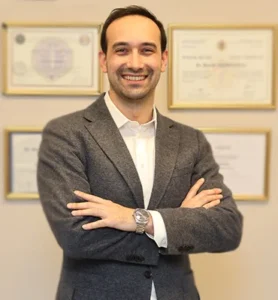
Dr. Burak Pasinlioğlu
Page reviewed and edited by Dr. Burak Pasinlioğlu. Dr. Pasinlioğlu is our partner plastic surgeon, a renowned EBOPRAS certified cosmetic surgeon, with more than a decade's experience.
